Vivek Menezes
is passionate about Goa. Having lived in the US for many years, he now makes his home in Panjim and often leads his friends around Fontainhas, one of the old Portuguese quarters of the city.
It is a beguiling neighbourhood,
full of unexpected little alcoves
and intriguing alleyways.
Often Vivek will stop at this door
and call out to the occupant, Mr. Percival Noronha, who has lived in that house for some eight decades.
From his windows Mr. Noronha enjoys a view that reminds Vivek of Lisbon:
Mr Noronha is an antiquarian and is also the longstanding President of the Association of the Friends of Astronomy.
As with the descendants of many old Goan families he has a wonderful collection of Chinoiserie (it is interesting how Goans and Parsis are the only Indian communities that possess these reminders of the China trade).
Mr. Noronha has written an article called ‘Fontainhas – Living with the Past and was kind enough to hand me a copy. It begins: ‘In the context of the history of the city of Panjim, the ward of Fontainhas certainly deserves a special reference. In fact nothing so symbolises the city as Fontainhas – the most characteristic and the true cultural centre of old Panjim. In an instant it summons up the ward hurriedly built with its narrow winding streets and quaint houses having a charm of their own.’
”The phenomenon of expansion and settlement in this area,” the article continues, “was mainly due to the existence of a spring of crystalline waters. At the time of governor, Viscount of Ourém Joaquim José Januário Lapa (1851-55), an artistic reservoir in basalt stone was built around this spring known as ‘Fonte Phoenix’ which provided three taps of potable water to the city. Ultimately the are of ‘Palmar Ponte’ due to the existence of this fountain was called ‘Fontainhas’. The Governor Viscout of Ourém did also commendable work by training the course of Fontainhas creek and building marginal roads on both of its sides. The Rua de Ourém… is still known after him.’
‘For the spiritual needs of the new settlement, a small chapel with only one altar, under invocation of St. Sebastian, was built in 1818. This chapel was having a small nave with an adjoining narrow corridor with a staircase leading to the choir… Another image of great historicity which is housed in the Chapel of St. Sebastian in Fontainhas, is the Crucifix of the Inquisition. The Inquisition was set up in Goa in 1560…. The Tribunal of the Inquisition funcioned in the old Palace of Sabaio in Old Goa close to the Cathedral. … In 1918… all the religious objects of the Secretariat were transferred to the Bishop’s Palace. It was at this time that the president of the Managing Committee of the St. Sebastian Chapel, José Agostinho Xavier, represented to the Patriarch Dom Mateus de Oliveira Xavier and managed to get the Crucifix transferred to this chapel.’
[The Chapel of St. Sebastian, where the Cross of the Inquisition is housed].
Today some of the old town- houses have been turned into boutique hotels.
[The Panjim Inn]
But this is not a part of Goa that attracts many tourists and Fontainhas has not changed as much as some other parts of the city. A hundred-year-old library sits at the entrance to a quiet lane
and the Confeitaria 31st Janeiro lies hidden inside a nearby alley.
The bakery was started by Andrew Mascarenhas and is now run by his charming daughter, Gletta.
The board that lists the bakery’s offerings still hangs on a wall 
(the mushroom patties are particularly recommended).
Columnist Cecil Pinto, a conoisseur of Goan fare, takes the view that a visit to Fontainhas must end at a restaurant called ‘Elite Flavours’
where Charles Soares serves up some superb ‘Bombil fry’ (fried Bombay duck);
and the conviviality extends well into the night.




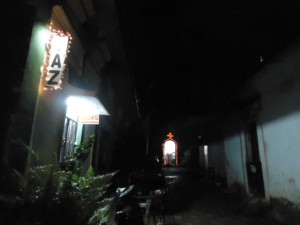
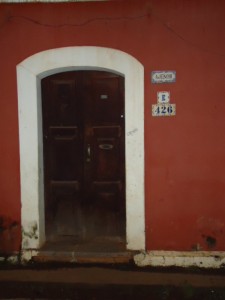
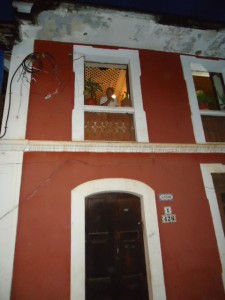


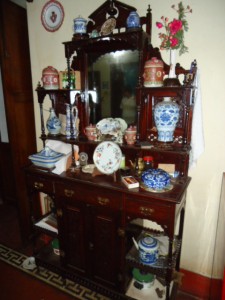
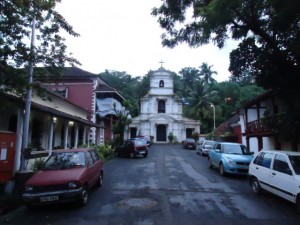

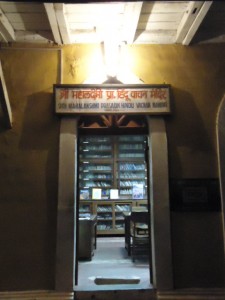
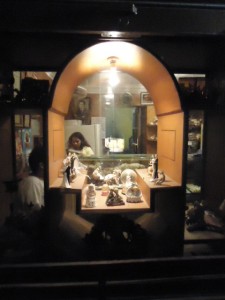
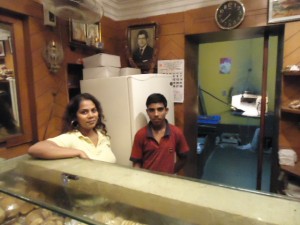


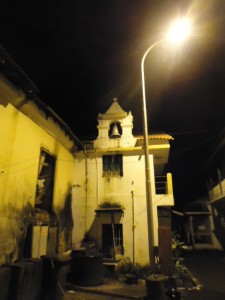
Goa is very close to my heart because it has rich cultural heritage…great contributor to the music of India today.
Vijay Lazarus
Hi
I love this area in Panjim although I am a fellow goan. I live in Mapusa.
Am looking to have a change in my residence.
Who would you recommend I see to find a decent place to live in Fontainhas
Thanks